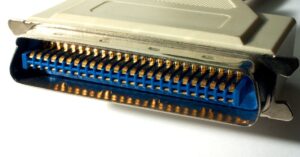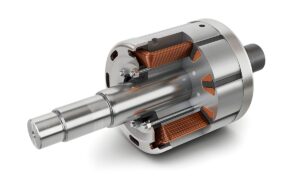Service panels are the control center for our home electrical systems. Their design hasn’t changed much since resettable circuit breakers replaced fuses in the mid-20th century… until now. The service panel of the future is digital, and promises to revolutionize the home electrical system.
The change is necessary because of the electrification of homes, a reality that has begun in North America and elsewhere. There are two main factors driving this change: dwindling supplies of fossil fuels and the harmful environmental consequences of burning these fuels. Government policies to address these problems are to replace gas ovens, stoves and cars with electric ovens.
Add to this the fact that cost-conscious homeowners are supplementing grid power with renewable energy from sun and wind and using batteries to store energy, and the need for an intelligent control center becomes inevitable.
Several manufacturers, including Schneider Electric, Eaton, Copen, and San Francisco startup Span, have introduced smart panels. Electrical expert John Williams says these panels are much more reliable than they were a few years ago because “such brand-name equipment has been thoroughly evaluated and subjected to comprehensive testing by UL, ETL, CSA or other testing laboratories.”
Not every home needs a smart panel, at least not yet. But as electricity advances, these advanced controls will likely become as ubiquitous as the traditional analog breaker panel is today.
What is a smart electrical panel?
From the outside, a smart panel looks like a simplified version of a traditional panel, but it works in a radically different way. Digital circuit breakers replace the manual switches you find on a traditional panel, and each breaker is connected to a central data control center that monitors the entire load on the panel and can turn the breakers on and off as needed.
The panel performs a real-time load analysis and provides that data to the homeowner, who can program the panel either directly or through a mobile app. A homeowner can, for example, choose to conserve battery power during outages, reduce energy consumption during peak hours, or both. This type of load management is crucial in a home that combines the grid and renewable energy while providing power to a household full of electrical appliances. (Find out what modern homebuyers need in new home appliances.)
A smart panel connects to a home’s circuits in the same way as a traditional panel, but design and function vary depending on the manufacturer. The Span panel, a panel of choice from Sunrun (a leading solar installer), features a built-in switch that automatically disconnects the panel from the grid when the power goes out so the home’s battery system can safely take over.
The Span board provides three circuit ratings for extending battery life during a power outage: “must have,” “nice to have,” and “not essential.” When the power goes out, all “non-essential” circuits are turned off while the “nice to have” circuits remain until the battery level drops to 50%.
Pros and cons of the smart electrical panel
The difference smart panels make to home electrical systems is similar to the difference smartphones make to everyday communications. Installing a smart panel provides the following benefits:
Low energy costs. More efficient use of energy; Automatic switching between solar, wind and grid electricity; And remote diagnosis of electrical problems.
The downside is the cost. Not only is a smart panel more expensive than a traditional panel — $2,000 to $5,000 versus $400 to $800 — but installing one may involve a service upgrade. If your current panel is rated for 100 amp service, you will likely have to upgrade to 200 amps or more. Since this involves replacing the service cable with a heavier one, the entire project could cost between $1,300 and $3,000.
The upside is that you’ll probably need to upgrade your service anyway if you plan to fully electrify your home by replacing gas appliances with electric ones. You’ll also need to upgrade if you plan to install a car charging system.
Who should upgrade to a smart electrical panel?
Basically, every homeowner can benefit from a smart panel, but it’s a luxury upgrade for any grid-tied home that has a traditional panel that works well. The smart board becomes more necessary for people in the following situations:
You install a solar or wind-powered electrical system and connect it to the grid. The smart panel will help you improve your energy saving. You are installing a battery backup system. The smart panel will manage the electrical load to maximize battery life. You are electrifying your home and replacing all fossil fuel appliances with electric appliances. The smart panel will help balance electrical usage to prevent overload.
One of the advantages of a smart panel is the ability to connect to it remotely. This allows you to turn breakers on and off and diagnose problems while you are at work or on vacation.
For example, if you rent part of your home as an Airbnb while you’re away, you can turn the power on for that part of the house when people are there and turn it off when they leave, to save energy. If your home is vacant during the winter while you’re vacationing in the sun, you can monitor weather conditions in the home, turn on the heat during cold periods to prevent the plumbing from freezing and leave the heat off at other times. Take this opportunity to learn about the energy vampire of backup power that can keep many of your devices running 24 hours a day.
You can do all of this from your mobile device, which is pretty much the definition of convenience. Here’s what you need to know about smart home wiring.
ⓘ
Next: Check your homeowner’s manual for the AC fuse box.



